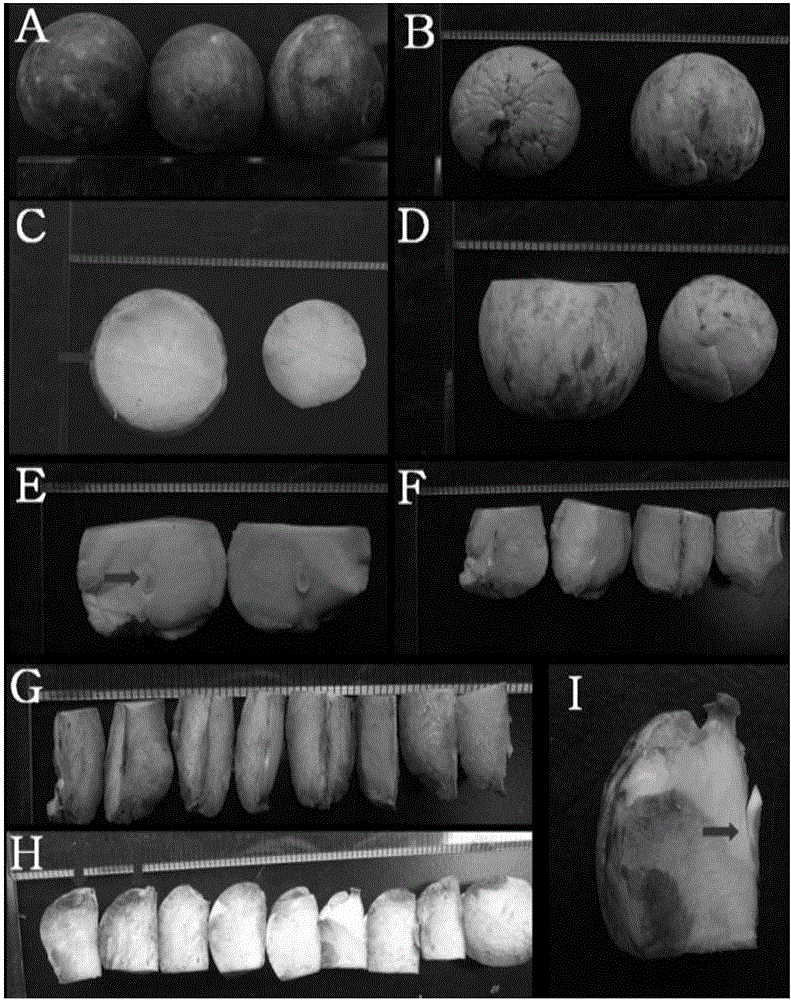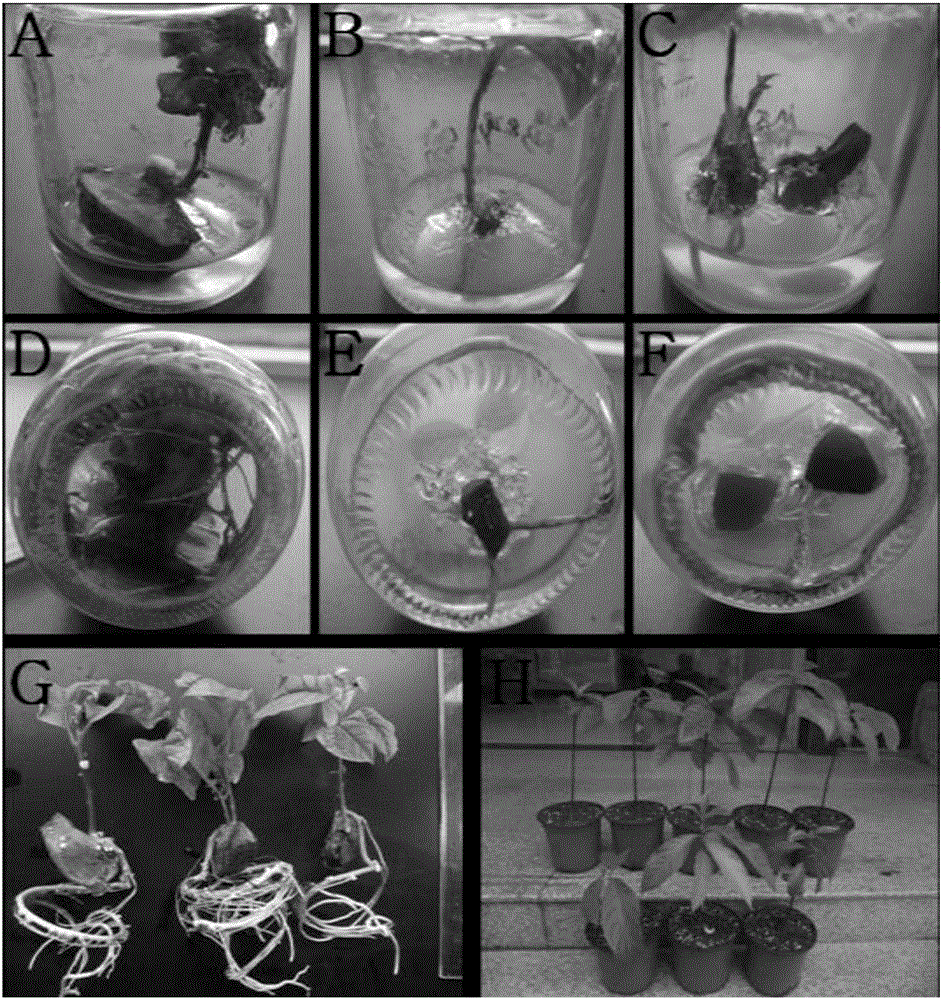Method for raising alligator pear seedlings
A cultivation method and avocado technology are applied in the directions of cultivation, seed immunization, seed and rhizome treatment, etc., and can solve the problems of inability to meet large-scale production of seedlings and low reproduction coefficient.
- Summary
- Abstract
- Description
- Claims
- Application Information
AI Technical Summary
Problems solved by technology
Method used
Image
Examples
Embodiment 1
[0058] After removing the avocado seeds from the ripe avocado pulp, wash the pulp attached to the outer layer of the seeds; air-dry the seeds naturally for about 3 days, rub to remove the seed coat attached to the outer surface of the seeds; before tissue culture, use a knife to remove the uneven surface of the cotyledons of the seeds Cut off the part of the seed, try to make the surface of the seed smooth and flat, so as to facilitate the sterilization of the seed surface.
[0059] To sterilize the surface of the seeds, treat them with 70% (v / v) ethanol for 1 minute, 1% (w / w) mercuric chloride for 2 minutes, and wash them with sterile water for 3 times, each time for 1 minute.
[0060] Cross-cut, cut off the top 1 / 3 of the seed, leave the remaining 2 / 3 for later use, make the first longitudinal cut, cut vertically downward along the gap between the seed cotyledons, and divide the seed into two, so that both parts retain the seed embryo part.
[0061] Use tweezers to pick up ...
Embodiment 2
[0063] After removing the avocado seeds from the ripe avocado pulp, wash the pulp attached to the outer layer of the seeds; air-dry the seeds naturally for about 3 days, rub to remove the seed coat attached to the outer surface of the seeds; before tissue culture, use a knife to remove the uneven surface of the cotyledons of the seeds Cut off the part of the seed, try to make the surface of the seed smooth and flat, so as to facilitate the sterilization of the seed surface.
[0064] To sterilize the surface of the seeds, treat them with 70% (v / v) ethanol for 2 minutes, 1% (w / w) mercuric chloride for 2 minutes, and wash them with sterile water for 3 times, each time for 1 minute.
[0065] Crosscutting, cut off the top 1 / 3 of the seed, leaving the remaining 2 / 3 for later use; the first longitudinal cut, cut vertically downward along the gap between the cotyledons of the seed, and divide the seed into two, so that both parts retain the seed The embryo part of the seed is then cut...
Embodiment 3
[0068] After removing the avocado seeds from the ripe avocado pulp, wash the pulp attached to the outer layer of the seeds; air-dry the seeds naturally for about 3 days, rub to remove the seed coat attached to the outer surface of the seeds; before tissue culture, use a knife to remove the uneven surface of the cotyledons of the seeds Cut off the part of the seed, try to make the surface of the seed smooth and flat, so as to facilitate the sterilization of the seed surface.
[0069] To sterilize the surface of the seeds, they were treated with 70% (v / v) ethanol for 1 minute, 1% (w / w) mercuric chloride for 5 minutes, and washed with sterile water for 3 times, each time for 1 minute.
[0070] Crosscutting, cut off the top 1 / 3 of the seed, leaving the remaining 2 / 3 for later use; the first longitudinal cut, cut vertically downward along the gap between the cotyledons of the seed, and divide the seed into two, so that both parts retain the seed The embryo part of the embryo, then ...
PUM
 Login to View More
Login to View More Abstract
Description
Claims
Application Information
 Login to View More
Login to View More - R&D
- Intellectual Property
- Life Sciences
- Materials
- Tech Scout
- Unparalleled Data Quality
- Higher Quality Content
- 60% Fewer Hallucinations
Browse by: Latest US Patents, China's latest patents, Technical Efficacy Thesaurus, Application Domain, Technology Topic, Popular Technical Reports.
© 2025 PatSnap. All rights reserved.Legal|Privacy policy|Modern Slavery Act Transparency Statement|Sitemap|About US| Contact US: help@patsnap.com



